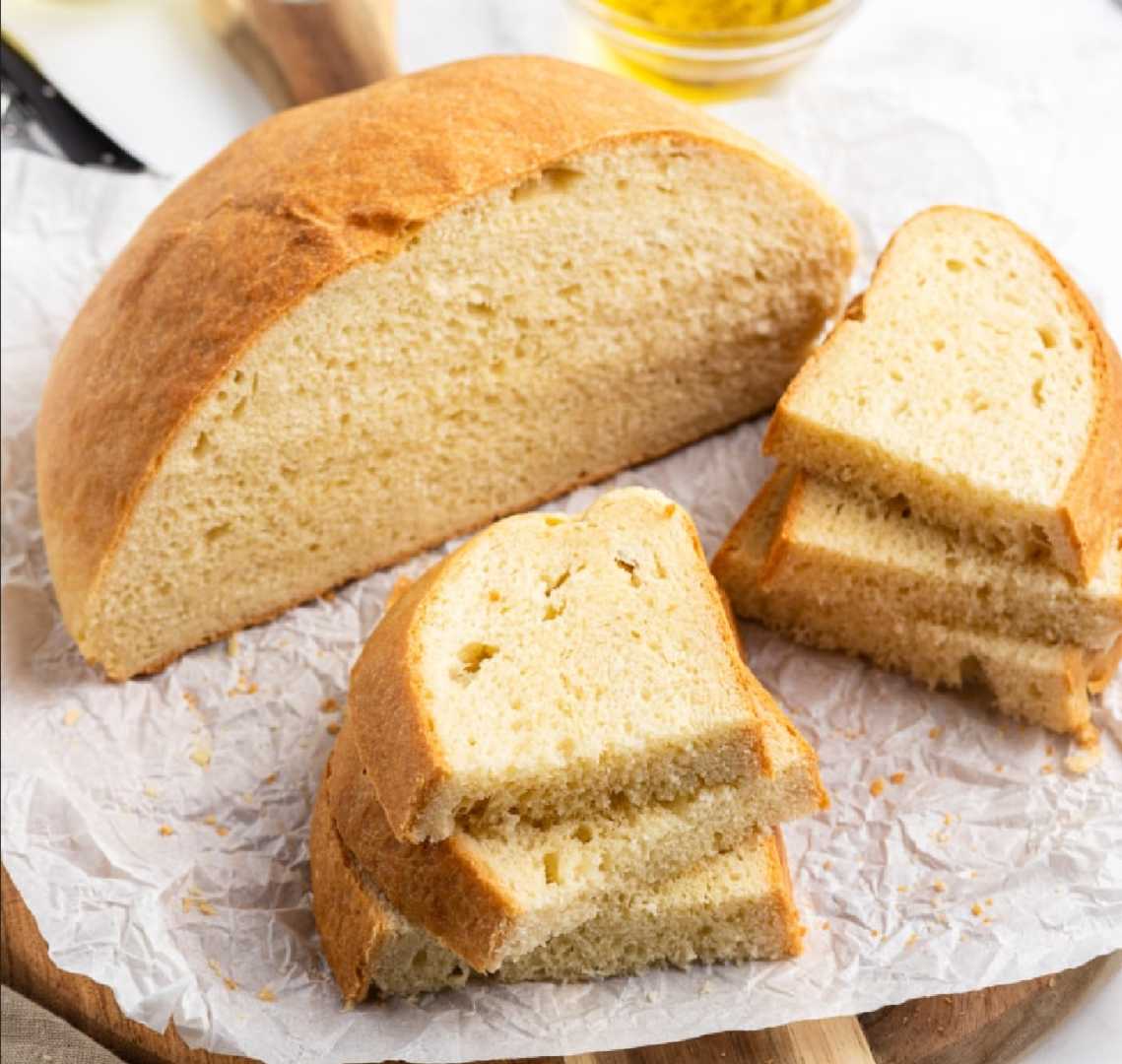Selecting Recipe and Ingredients is very important in making bread. The freshest, best-quality ingredients are required for successful bread baking. There is no way to convey this enough!
Most bread recipes start with a combination of flour, water, yeast, and salt. The addition of anything else increases the flavor and distinguishes one delicious bread from another. Every component matters while making a loaf of bread. The caliber of each item and how it will impact your dish must constantly be considered.
Flour
Bread is made from flour. Although there are loaves made without flour, yeast, sugar, and even salt, there are none without salt. Any milled cereal grain can be used to make flour (or rarely groundnut meal), but wheat flour is the one most frequently used to make bread. There are several distinct types of wheat flour, including whole wheat, bread flour, and all-purpose flour.
Use only the kind of flour specified in the recipe. Every kind of flour has a unique behavior when mixed with various additives and settings.
Types of Flour
a. All-Purpose Flour:
All-purpose flour is made from the interior of the kernel, which lacks the bran and germ, and is finely ground. It is a mixture of soft wheat and hard wheat with varying levels of gluten. The most popular type of flour used in bread baking is all-purpose flour. It is simple to work with and include. There are two types of it: bleached and unbleached. Since they frequently behave similarly in recipes, the choice to use one over the other is typically based on the baker’s personal preferences. Either chemically or naturally can be used to bleach flour.
b. Bread Flour
A particular flour known as bread flour is required in several recipes. Over 99% of bread flour is made of hard wheat, plus a minor percentage of malted barley flour, vitamin C, or other bread-improving ingredients
c. Whole Wheat Flour:
Wheat germ is present in whole wheat flour, giving it a richer flavor as well as a higher nutritional and fat content. Whole wheat flour is used to make a variety of delectable loaves.
Yeast and Yeast Storage
The numerous small living organisms that make up baker’s yeast turn the fermentable carbohydrates in the dough into carbon dioxide and ethanol. In order for yeast to work, it must be fresh because it is a frequent leavening agent used in bread baking that makes the dough rise and become less dense and more airy. In other words, if the yeast is dead, the sugars won’t be activated, and the dough won’t rise.
Sugar
Use the specified amount of sugar, just like you would flour. Yeast is activated with the aid of sugar. When sugar and yeast are combined in warm water, the yeast eats up the sugar and breaks it down into ethanol and carbon dioxide, which causes the yeast to activate and rise. In some recipes, honey can serve the same function.
Eggs
Utilize only fresh eggs. Before each usage, have a look at the expiration date. Never substitute little eggs for large ones if the recipe calls for them. The equilibrium between the dry and wet ingredients will be upset by the size discrepancy. In general, it’s a good idea to put the eggs you’ll be using in your recipe in a bowl and let it out on the counter for an hour or two so they can get to room temperature. If you beat cold eggs, less air will be able to enter the mixture.
Put the tools and ingredients together
Among the equipment required for making bread are:
a. Food Scale
The secret to precise baking is a food scale. One of the fundamental principles of baking is that weight measurements are preferable to volume measurements.
b. Mixer
For first, you can choose to use your hands, but as demand rises, a stand mixer is inevitable.
c. Bench Scraper
You can use a bench scraper to shape and produce tension in your loaves prior to proving, wipe a flour- and moisture-covered, sticky work surface, or cut up sections of dough.
d. Bread Pan
The finest pan for baking sandwich bread is a nonstick standard bread loaf pan.
e. Oven
Oven types include electric, gas, and charcoal. On the latter, more
Please be aware that some of these items can be replaced with items you already have at home, as you will discover in some of our movies.
Count the components
You must be able to repeat your recipe and achieve consistent results in order for it to be successful.Here measuring becomes important.
You must be able to repeat your recipe and achieve consistent results in order for it to be successful.Here measuring becomes important.
You’ll need exact proportions, a decent mixing technique, and persistence for the yeast to work on the dough to get your bread on the road to a healthy rise. Here’s how to start making some fantastic homemade bread.
Of course, weighing the ingredients is the first step in creating bread. This is crucial since variations in ingredient quantities can result in substantial changes to the final loaf of bread. Ingredients can be measured in two different ways: by volume (cups and teaspoons) or by weight (ounces or grams). Weighing is preferred because it is more reliable (especially with flour,
Activate the yeast
You must leave dried yeast in a bowl of warm water (37–43 degrees) with a pinch of sugar for 10–15 minutes to activate it. If you combine warm milk and sugar, you can also utilize that. Baking uses yeast as a leavening agent, which causes bread and cakes to rise.
MIXING AND KNEADING
The dough needs to be kneaded after the ingredients have been measured. To stretch and strengthen the gluten in the dough, kneading includes pulling and pressing the dough. When water is added to flour, gluten, which is made up of protein strands, forms and gives bread shape. Bread rises because the protein stretches to make room for the bubbles created during fermentation.
Bread can be mixed and kneaded in four different ways: by hand, in a food processor, or in a stand mixer. Any approach will work for the majority of bread. While it is tempting to add too much flour when kneading by hand (which can dry up the dough), it is advisable to use a bread machine or stand mixer if you are working with a very sticky dough.
First proofing, please, first rise.
The majority of recipes require for the bread to double in size; depending on the temperature, moisture in the dough, the development of the gluten, and the ingredients used, this can take one to three hours. In general, the ideal atmosphere for bread rising is one that is warm and humid.
Every baker will have a different idea of how long things should rise because there are so many variables. The way and rate at which dough rises depends on a variety of factors, including the temperature of the water and the air, humidity, the size of the dough pieces, the shape of the dough, and the vessel in which the dough is placed.
Dough has generally been properly proofed when it has doubled in size. (The exception is dough that contains at least 50% whole wheat. due to everything
Slice and rework the dough.
The dough must be divided into the proper sections after the bulk ferment. This step can simply be bypassed if you have enough dough to make one loaf. Using a dough cutter or a big kitchen knife, remove the dough from the bowl and divide it into the necessary portions on a lightly dusted surface. To assure even amounts if you were selling the bread, you would need to scale (weigh) the dough.
permit a second rise, bake, and cool
The bread is more elastic and thus more difficult to deflate after the second proving. Second rises may greatly lengthen the time needed to produce a loaf of bread, but they may be necessary to provide the flavor and texture that characterize many common breads.
The dough is cut this time before doing this into the bread pan.
Theory-Building Session
Making bread is really easy. Basically, it involves these actions described below.
* Pick a recipe and an ingredient.
* Locate a workspace
* Put the tools and ingredients together.
* Compute the constituents’ quantities.
* Make the yeast active.
* Combine (using a food processor, electric mixer, hand mixer, or bread maker)
* Knead
* Permit first to rise
* Separate and sculpt the dough.
* Permit a second rise
* Set up the oven
* Bake
* Cool



